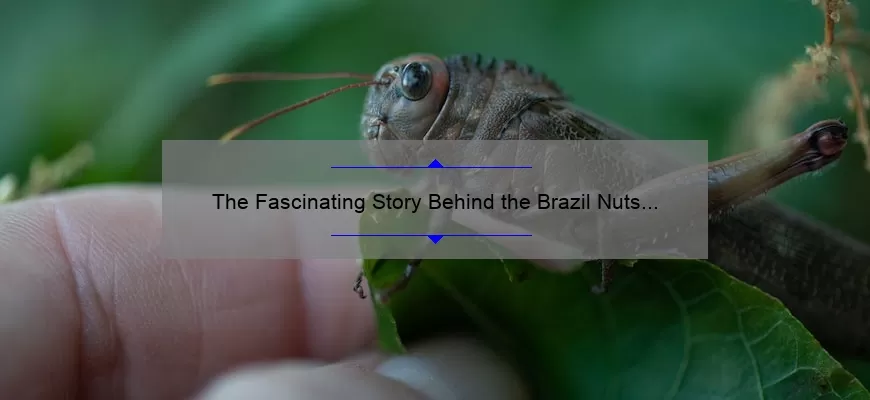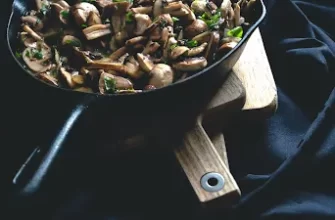Introduction to Brazil Nuts: History and Origins
Brazil nuts are some of the most popular snacks and ingredients found in kitchens around the world. But, where did these crunchy, delectable little treats come from? In this blog post, we’ll take a look at the history and origins of Brazil nuts – one of the greatest culinary pleasures known to humankind.
Brazil nuts have likely been part of South American indigenous diets since time immemorial, but it was Portuguese explorers who put them on the map. These sailors discovered Brazil nut trees during their sea voyages and brought back specimens for investigation and cultivation in Europe. By 1714, several cultivars were propagated and taken to India for domestic use by the British East India Company. Soon enough, demand for these tasty morsels grew from Portugal to other parts of Europe all throughout Asia.
The Brazil nut tree, native to Central and South America’s Amazon rainforest is an incredibly resilient species thanks to its symbiosis with bees that pollinate its flowers more than 100 feet up in the air! It’s been reported that a single tree can produce over 20kg (44lb) of seeds annually! This hardy yet impressive species has proven itself capable of thriving within even the most adverse environmental conditions – so much so that some argue that its very adaptation is what makes it such a savory snack today.
In addition to native populations relying on Brazil nuts for sustenance, many people outside Central/South America also now enjoy them as a beloved snack food or ingredient used in many recipes worldwide. For example, Brazilian cuisine features these unique culinary treats in Salgadinhos – savory pastries filled with flavorful combinations including Brazil nuts; Colombia celebrates tepary beans seasoned with crushed Brazil nuts; And Ecuador serves a festive sweet syrup thickened with ground Brazil-nut flour traditionally served over ice cream or other desserts! Whether eaten raw or cooked into dishes beyond traditional cuisines – let’s continue honouring this amazing nut by exploring its versatile flavor notes further!
Different Names for Brazil Nuts Around the World
Brazil nuts, commonly found in dessert recipes throughout the world, are not just fun to eat but interesting to discuss in regards to their various names across the globe. There’s a reason why Brazil nuts even took on a special name—it’s because they are native to South America, primarily Brazil itself. Although they come from one geographical source, they have many different names attributed to them depending on where you travel around the world.
For example, in Latin America and Spain, these crunchy little snacks are known as nuez de Brasil or castaña de Brasil. Going northward through North and Central America, you’ll hear people calling them ubí-Ucuri; walnuts of Coyol; coyols or sablito (monkey cheeks). It is also widely referred to by its scientific name Bertholletia excelsa by language scholars and researchers alike.
In parts of South Asia in areas like India and Sri Lanka where gourmet food is well revered, Brazil nuts can totally fit into that category with their name badam phali which translates roughly as almond twig or stick of almonds. This could be due to the similarity between shelled almond slices and the look of shelled Brazil nut pieces. Speaking of shelled varieties it goes by anther moniker in some regions: beskeenkraun which stands for ‘little spoon shell’ with literal translations from local dialects including Germanic languages such as Dutch and Icelandic.
Basque countries such as France will say orenezko karaka while hopping over to eastward Europe reveals another way they say nut: Castanie vechi des Nahtzel translating meaning ‘Old chestnut fruit’. Even going further southeast through The Balkans towards Eastern Europe phrase variations such as lesi zemne govnetca exist; translated literally ‘earth sippy cup’. In Africa particularly Ghana uses a descriptive approach naming it kowokyi brani monet which means burn fattened nut; applicable yet heavy handed perhaps?
Surprisingly Australia finds itself using yet another word for this very same snack—pink mucu! How about that for a totally inventive way of referring to what must have felt common enough down under? And finally rounding things up there is Kajoe Kempoet translated from Indonesia fittingly enough—crazy big seed! Out of all the many different words bestowed upon this savory treasure amidst divergent cultures it can only confirm one thing: No matter how you call them they still remain tasty treats enjoyed universally!
Nutritional Benefits of Eating Brazil Nuts
The Brazil nut is a powerhouse of nutrition, providing numerous dietary benefits to those who include it in their diet. Despite its small size, this wonder nut has great amounts of protein, fiber, and essential vitamins and minerals that make it an ideal addition to any meal for a healthful boost.
First off, Brazil nuts are exceptionally high in protein. Just one nut contains 4 grams of protein—the equivalent of a third of an ounce—which you can use to piece together your body’s building blocks. Pair Brazil nuts with carbohydrates such as oats or whole wheat for a combination of both slow-release energy and sustained muscle tissue growth.
In addition to protein, Brazil nuts provide plenty of dietary fiber which helps keep you feeling fuller for longer as well as ensuring healthy digestion throughout the day. With 3 grams per nut, these little powerhouses are not be underestimated when it comes to improving digestion and stopping constipation before it starts.
Perhaps most importantly are the essential fatty acids found within the kernels of these nuts. Brazil nuts have some of the highest levels of selenium among all food sources; at almost 100% Recommended Dietary Allowance (RDA) per ounce! Selenium is crucial for our bodies since it’s part an antioxidant system which helps fight free radical damage and keeps disease at bay by maintaining hormonal balance among other vital functions.
Not forgetting that a single serving also provides 12% RDA vitamin E which is renowned for its ability to help repair damaged skin cells after exposure from environmental factors like sun damage or pollution or simply aging – perfect for preventing those fine lines! A handy portion can supply well over half the RDA for manganese too which aids in central nervous system function – how genius!
From top to bottom, eating just three Brazil nuts may seem meaningless but actually give tremendous potential in terms keeping us healthy inside out with their unique nutritional qualities. So don’t underestimate the kick they could give your daily dose of nutrition!
Step-by-Step Guide for Cooking with Brazil Nuts
Brazil nuts are an ingredient that may appear intimidating at first, but they’re a great way to add protein, fiber and healthy fats to your meals. Here’s a step-by-step guide for cooking with Brazil nuts.
1. Preparing the Nuts: Before you can use Brazil nuts in your recipes, you need to make sure they’re properly prepared. Start by sorting through them and discarding any that look old or are discolored. Then, rinse the Brazil nuts off with cold water and let them dry completely before using them in recipes.
2. Grinding the Nuts: Depending on what you’re making, you may need to grind the Brazil nuts into a coarse meal or powder form. To do this, add the dry Brazil nuts to a clean coffee grinder or food processor and pulse until it has ground into small pieces. For sweet recipe applications – like smoothies and desserts – it might be best to have finer pieces as opposed to coarser ones for savory dishes like stir-fries and pastas; just be careful not to grind them too much or else you’ll end up with nut butter!
3. Storing the Nuts: Leftover Brazil nut pieces should be stored in an airtight container away from direct light and heat sources in order to preserve their freshness longer than if they were left out in open air. Alternatively, pre-ground Brazil nut meals can also be stored similarly but shouldn’t last more than 2 weeks before spoiling so it’s best consumed soon after preparation when possible!
4. Using in Recipes: Now that your ingredients are prepped and ready-to-go, let’s move onto incorporating Brazil nuts into some of your favorite recipes! To get started, try adding a few tablespoons of roasted or raw Brazilian nuts (whichever state was used for storing) on top of salads for extra crunch or blending some finely ground brazil nut meal directly into smoothie batter for added nutrition benefits without compromising flavor — yum! You could even make savory dishes by using chopped up Brazilian nut pieces inside stuffing mixtures for roasts or being included as part of crusts when baking pies – there’s endless possibilities here so feel free to experiment!
Frequently Asked Questions about Brazil Nuts
What are Brazil Nuts?
Brazil nuts (also known as Pará nuts, wild almonds and castania) are type of nut native to the Amazon Rainforest which is the richest tropical forest in the world. They are mildly sweet, large, triangular shaped nuts with a thick, brownish-black shell. In fact, they are the largest among all tree nuts and contain a wide variety of healthy vitamins and minerals that make them a nutritious snack or ingredient for many recipes.
Are Brazil Nuts good for you?
Yes! Brazil nuts are incredibly nutritious and an excellent source of various essential vitamins, minerals and antioxidants. They provide healthy monounsaturated fats like oleic acid along with omega 3 fatty acids which help to maintain levels of cholesterol in our blood stream. Moreover, Brazil nuts are also high in fiber which helps support digestive health. As an added bonus eating 7-8 of these delicious nuts per day can also provide you with your daily recommended value for selenium – an important nutrient to keep your immune system running smoothly!
Should pregnant women eat Brazil Nuts?
Yes! Pregnant women should consider incorporating brazil nuts into their regular diet due to the abundance of nutrients that they possess such as selenium which plays a critical role during early fetal development. Eating 7-8 brazil nuts per day during pregnancy can ensure adequate amounts of this essential mineral. However it is advisable to consult with your health care provider first if you have any concerns or questions about adding these delicious treats into your diet routine while pregnant!
Are there any risks associated with eating too many Brazil Nuts?
Consuming too much of any food can lead to health risks so it’s always better to practice moderation when enjoying brazil nuts. If one decides to consume more than 8 at once on a regular basis over extended periods then they may place themselves at risk for adverse nutritional effects such as gastrointestinal distress or potassium toxicity due to its relatively high levels contained within each nut. Therefore it’s important not go overboard when indulging yourself in these delectable treats by limiting your intake accordingly 🙂
Top 5 Facts about Brazil Nuts
Brazil nuts are one of the most sought-after and popular nuts around the world due to their nutrient-packed profile. Here are some fun facts about this delicious snack that you may not have known:
1. Brazil Nuts Come From a Gigantic Tree – The Brazil nut tree (Bertholletia excelsa) is native to the Amazonian rainforest and its fruits can weigh up to 5 kg (11 lb). This makes it one of the largest trees in Amazonia, with some specimens reported to reach heights over 50 meters (~164 ft)! As its name implies, these trees are responsible for producing most of the world’s commercially produced Brazil nuts.
2. Rich in Nutrients – Per 100 g, Brazil nuts contain an impressive 718 calories, upwards of 22 g of protein and healthy fats! Rare among a lot of other common snacks, they are also high in selenium (an important micronutrient). In fact, just one kernel contains almost your full daily requirement!
3. Used as Medicine by Indigenous Groups – For centuries, indigenous peoples have used crushed Brazil nuts as traditional medicine for both physical and spiritual ailments. Dishes created from ground powder were often applied topically or ingested orally as treatments for gastritis or even skin infections like ringworm. These days however, there is little evidence that consuming small doses bring any benefit so bare this on mind before trying too much!
4. Very Durable – Despite its hard shell exterior, Brazil nut hampers exhibit virtually no sign of aging until long past their expiration date! This is because their shells act as both a filter and protective barrier against spoilage so theoretically speaking; you could store them practically forever despite what packaging labels tell you!
5. Unique Pollination Method – Unlike other foods which require either mammals or bees to help with pollination duty – Brazils need only beetles! Specifically a species called Zabrotes subfasciatus whose larvae gorge on the nut itself while providing vital pollithat furtherertherance during harvest seasonweeding out weak candidates during quality control chcklistingriteria nitpicking in search of perfectionbudding producers towards promising propertieculiarity when it comes to finding optimal candidates and ruling out low performers.. The best part? These intrepid workers get paid handsomely with ample amounts food scraps about equalouble equalizedoutput potentialitedin return for their serviceshardship such evelopment meaning everyone prospers at the same rate helping to establish sustainable production chain links from seedliks rafter!.



![Unlocking the Mystery of Black Gorilla Lug Nuts: A Story of Strength and Style [5 Essential Tips for Choosing the Best Lug Nuts]](https://baru-nuts.com/wp-content/uploads/2023/04/21-335x220.jpg)
![Rev Up Your Ride: The Ultimate Guide to Black Chrome Lug Nuts [Solve Your Wheel Woes with Expert Tips and Stats]](https://baru-nuts.com/wp-content/uploads/2023/04/22-335x220.webp)
![Binky Goes Nuts: A Tale of a Mischievous Pet and How to Keep Them Calm [Expert Tips and Stats]](https://baru-nuts.com/wp-content/uploads/2023/04/23-335x220.jpg)


